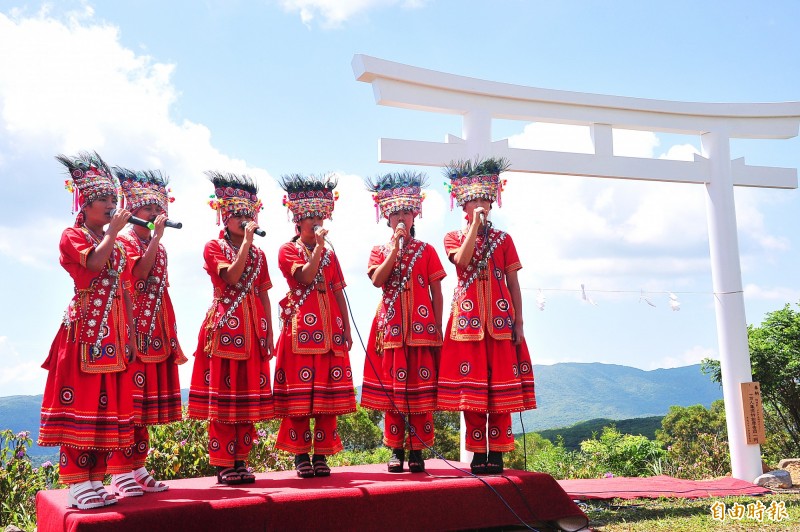《TAIPEI TIMES》 Man threatens September arson of Shinto shrine

Singers perform at the Gaoshi Shrine in Pingtung County’s Mudan Township in an undated photograph. Photo: Tsai Tsung-hsien, Taipei Times
RELIGIOUS SIGNIFICANCE: Local residents said the shrine was not built for political reasons — that constant politicizing of the shrine is gravely misleading and erroneous
By Tsai Tsung-hsien and William Hetherington / Staff reporter, with staff writer
A Chinese man who claims to have spent time in jail for setting fire to Japanese property in Japan and South Korea has threatened to burn down a Japanese shrine in Pingtung County.
The man, who identified himself as Liu Qiang (劉強), said in a video on Twitter that he plans to “rid Taiwan of the obstruction caused by separatists and allow the ‘mother country’ to be united.”
Liu described plans to visit Pingtung County “some time in September” to destroy the Gaoshi Shrine (高士神社), which was built “on Chinese land by Japanese invaders.”
“My goal in destroying the shrine is to declare that Taiwan belongs to China,” he said, adding that he was not afraid of prison or “being extradited to Japan by the Taiwanese separatists.”
Police on the Hengchun Peninsula (恆春半島), where the shrine is located, said that they are on heightened alert and have increased patrols at the temple.
One resident said the locals hoped that the shrine, which is a historical site and scenic attraction, would not be politicized in the run-up to national elections in January.
“The shrine was not built for political reasons. The constant politicizing of the shrine is gravely misleading and erroneous,” they said.
Japanese Shinto priest Kenichi Sato, who rebuilt the shrine in 2015 and donated it to the county to thank Taiwanese for their support and assistance during the earthquake and tsunami that struck northern Japan in 2011, said that the shrine was originally built for religious reasons.
Built during the Japanese colonial period in 1939, the shrine had been damaged by typhoons over the years and left in a state of disrepair, he said.
Sato became involved in the shrine’s repair after young Paiwan locals asked Shinto officials in Japan to assist with its restoration.
Shrine manager Chen Chung-yuan (陳重源) said that the shrine still has religious meaning for some people and is a part of the county’s cultural history, as well as a scenic spot.
If the shrine were to be burned down it would bring immeasurable harm to the local Paiwan community and damage the community’s relationship with non-Paiwan people, he said.
Chen said that he contacted the police and immigration authorities when he learned of the threat.
Liu’s post was shared by more than 60,000 Japanese users on Twitter, with many urging Taiwanese to remain alert.
Last year, a 68-year-old Taiwanese man surnamed Chung (鍾) also threatened to burn the shrine to commemorate the 1937 Marco Polo Bridge Incident.
Former Chinese Nationalist Party (KMT) lawmaker Alex Tsai (蔡正元) had previously posted an article criticizing the Democratic Progressive Party for allowing it to be restored and called the shrine an insult to Aborigines.
新聞來源:TAIPEI TIMES



















